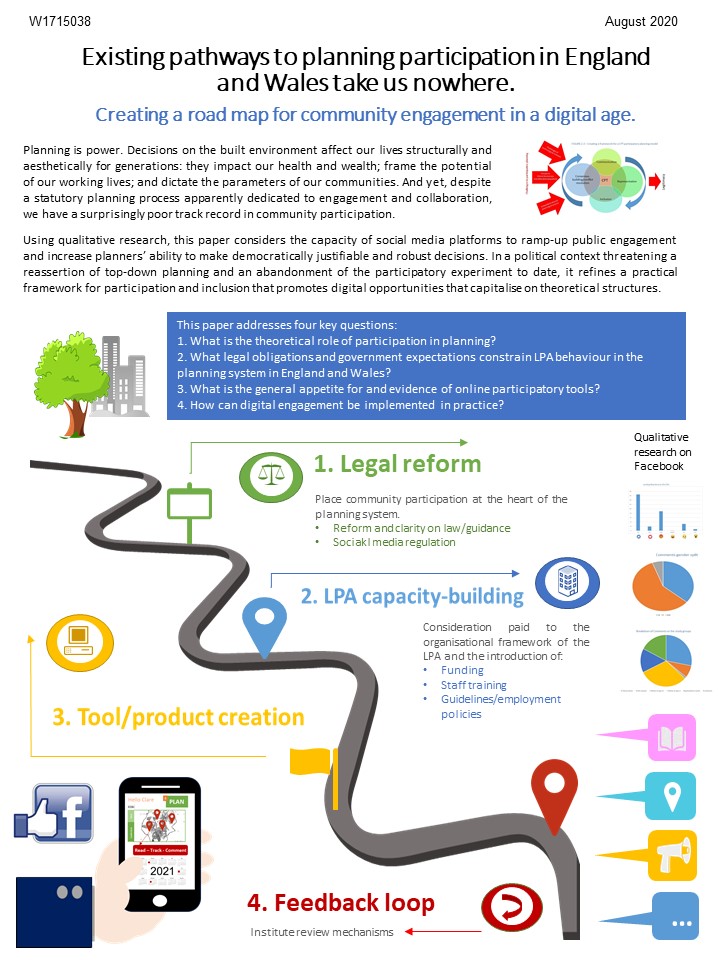Existing Pathways to Planning Participation in England and Wales take us nowhere: Creating a road map for community engagement in a digital age
This paper posits that the legal and practical structures of our existing planning system are not fit-for-purpose, given apparent aspirations for participatory planning and the technological capacity of our digital age. Qualitative and quantitative research was compiled in a political context where a Government White Paper Planning for the Future effectively threatens a reassertion of top-down planning in the built environment and an abandonment of the participatory experiment to date.
The paper looks at several key participatory themes:
- The academic articulation of the importance of planning participation – The contribution of key planning theorists over the last forty years and the criticisms of collaborative planning theory’s key themes are explored: capacity-building, communication, representation and inclusive participation.
- The legal obligations and existing government expectations that encourage or hinder participative behaviour – The existing legislative and guidance framework is detailed, and the documentation produced by one LPA is assessed for compliance. As the accelerator impact of Coronavirus loosens statutory requirements temporarily, the paper considers whether we are on the cusp of change notwithstanding the potential White Paper overhaul.
- The general appetite for and evidence of online participatory tools – The paper considers evidence of an appetite for change and key impediments to digital tools being used. Case studies (including Facebook) provide learning points on how they have already been employed in the built environment.
- Implementing digital engagement in practice – A practical end product involves the creation of two route maps for those LPAs with the appetite and will to engage online.










